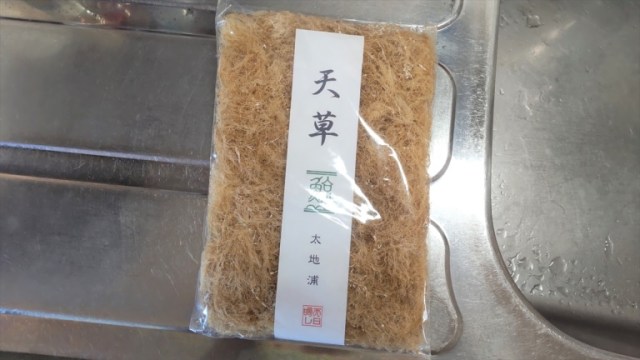
It comes from the sea, but when you’re done preparing it, it tastes divine.
On a recent trip to Wakayama Prefecture, our Japanese-language reporter Haruka Takagi stopped in a michi no eki. Literally translating as “road station,” michi no eki are roadside rest stops/gift shops that specialize in locally produced products, and while she was there she bought this.
That’s a bag of tengusa, or “heaven grass.” However, it doesn’t come from the skies above, but below the surface of the sea, as it’s a kind of seaweed.
Fibrous as it may be, though, it comes out of the bag in an incredibly stiff clump. Haruka tore off a tiny piece and popped it in her mouth, and the plastic-like texture and consistency had her brain immediately signaling “This isn’t food.”
But tengusa really is edible. It just needs to be properly prepared, and it’s actually the most traditional ingredient used for making the old-school Japanese gelatin dessert called tokoroten.
The first step in the process is to soak the tengusa in water for an hour to soften it up. Sure enough, this loosened up the clumping.
Then you need to bring the water to a boil, add a tablespoon of vinegar, and let it keep boiling on medium heat for a total of two hours. After the first 50 minutes, Haruka needed to add more water, and she had to do it again another 40 minutes later, followed by turning the flame down to low heat for the last 30 minutes.
As the process went along, the individual strands started to dissolve, turning the liquid increasingly thick.
They don’t completely melt, though, so once the two hours are up, the next step is to strain the liquid through a cloth into a tupperware container.
Then you just need to set it in the refrigerator to chill and harden.
All together, it took Haruka six hours to turn her heaven grass into Japanese gelatin. The orthodox tengusa, she noticed, produced tokoroten with a stronger yellow color than some modern substitute ingredients do.
At this point, the stuff can be eaten, but it’s still not in its most delicious form. Haruka’s pouch of tengusa was a jumbo-sized bag that makes 10 servings, and she could just slice off a piece with a knife. However, to get the best texture, tokoroten aficionados use a special tool called a tentsuki, which Haruka picked up at a specialty kitchen supplies shop.
Then, to give it a sweet flavor appropriate for a dessert, she added kuromitsu (a molasses-like brown sugar syrup) and kinako (roasted soybean powder).
The sticky nature of the kuromitsu ensured every bite of gelatin came coupled with the sweetness of the syrup and powder, and Haruka was once again reminded why tokoroten has been a popular dessert in Japan for generations, and it tasted so heavenly that she was very happy she’d bought the 10-serving bag of heaven grass.
Photos ©SoraNews24
● Want to hear about SoraNews24’s latest articles as soon as they’re published? Follow us on Facebook and Twitter!
[ Read in Japanese ]

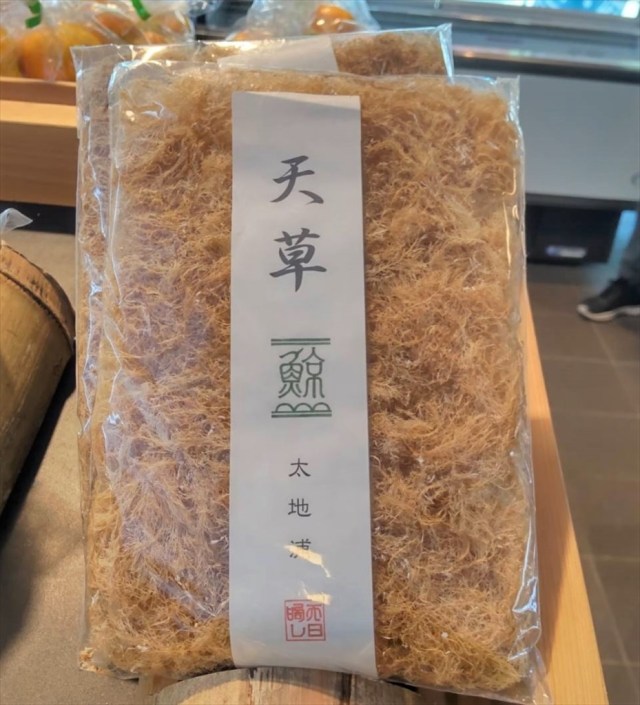
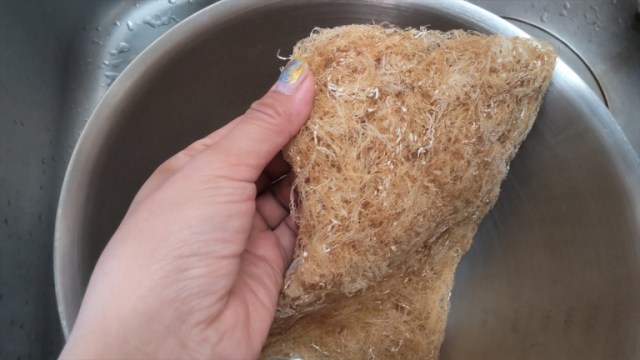
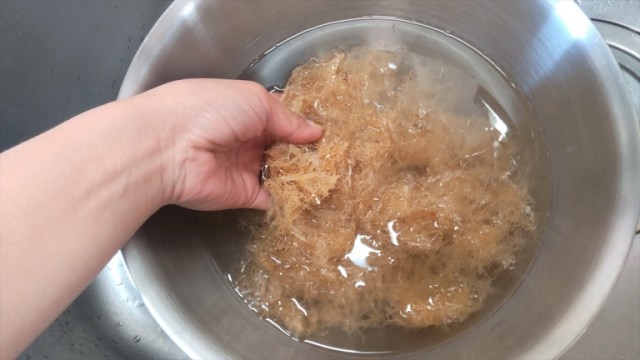
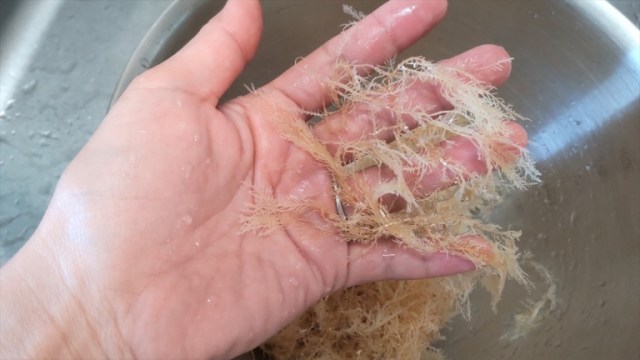
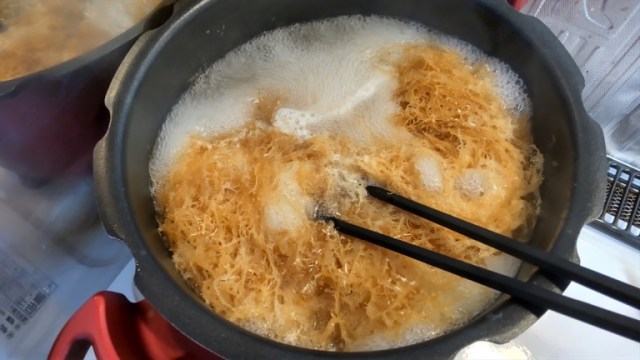
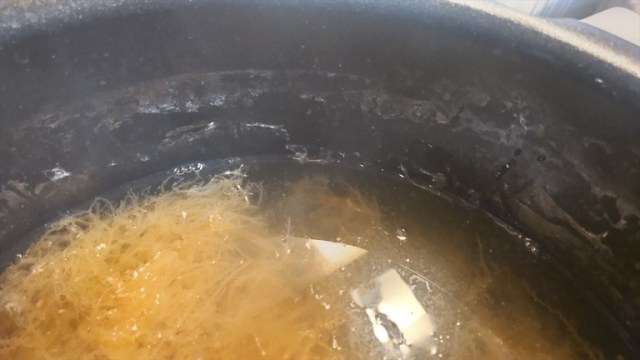
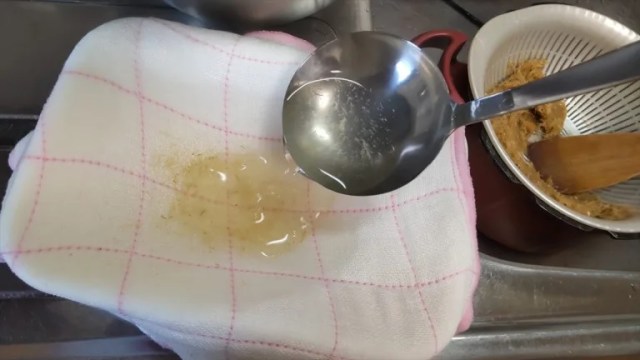
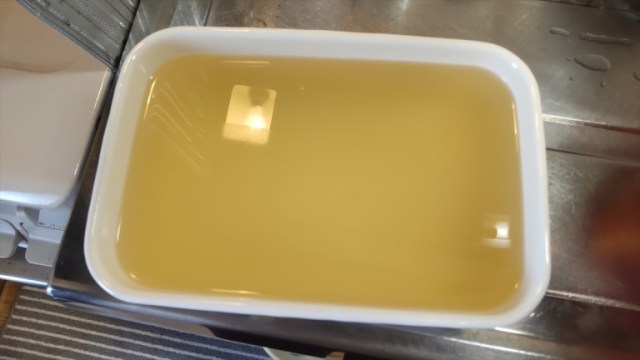
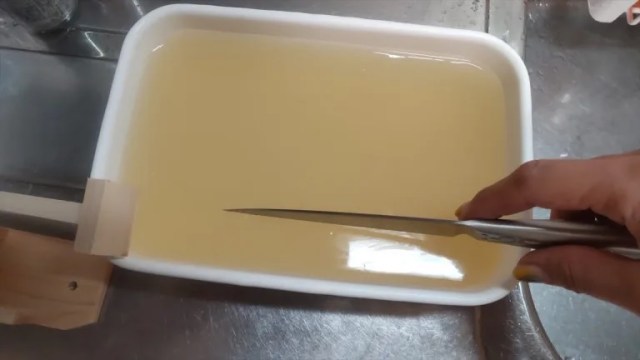
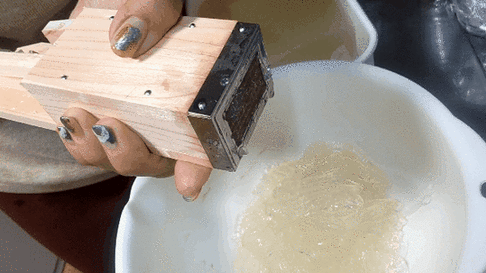
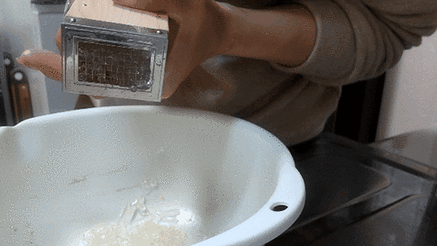
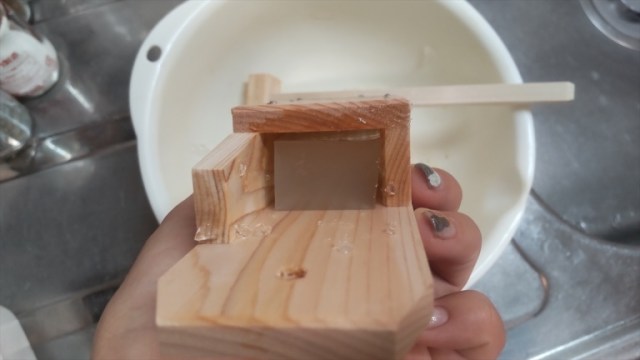

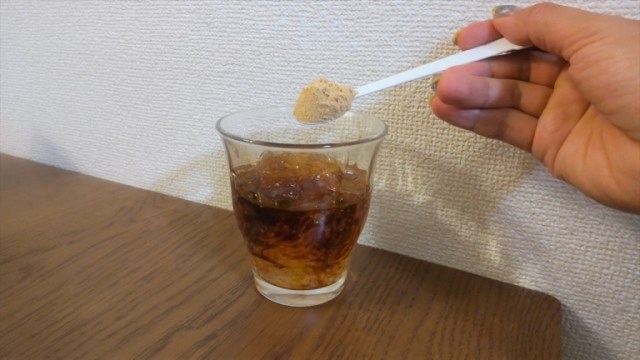
 This rare autumn vegetable is the perfect addition to your stir-fry or salad【SoraKitchen】
This rare autumn vegetable is the perfect addition to your stir-fry or salad【SoraKitchen】 Ice mochi is Japan’s original freeze-dried food from over 600 years ago【Taste test】
Ice mochi is Japan’s original freeze-dried food from over 600 years ago【Taste test】 Making igisu, a traditional Japanese food even most Japanese people don’t know about【SoraKitchen】
Making igisu, a traditional Japanese food even most Japanese people don’t know about【SoraKitchen】 Vending machine noodle ice cream: A retro icon in Japan brings joy to a new generation
Vending machine noodle ice cream: A retro icon in Japan brings joy to a new generation Soy sauce on pancakes? We try the newest dessert idea from a century-old soy maker【Taste test】
Soy sauce on pancakes? We try the newest dessert idea from a century-old soy maker【Taste test】 We found possibly the quietest Japanese-style hotel in Tokyo’s bustling Shinjuku district
We found possibly the quietest Japanese-style hotel in Tokyo’s bustling Shinjuku district Studio Ghibli releases new anime calendars for 2026 with heartwarming fan service
Studio Ghibli releases new anime calendars for 2026 with heartwarming fan service Chocolate-covered shrimp snacks make a comeback in Japan this winter
Chocolate-covered shrimp snacks make a comeback in Japan this winter 7 great places to see Mt. Fuji from without having to climb it
7 great places to see Mt. Fuji from without having to climb it How much difference does the choice of mold make in fermenting food?
How much difference does the choice of mold make in fermenting food? Japan’s oldest largetooth sawfish in captivity back on display in Mie Prefecture
Japan’s oldest largetooth sawfish in captivity back on display in Mie Prefecture Muji cake mania! Which of the 23 flavors of cake they sell are the best?
Muji cake mania! Which of the 23 flavors of cake they sell are the best? This French toast recipe that uses ice cream will knock your pajamas off【SoraKitchen】
This French toast recipe that uses ice cream will knock your pajamas off【SoraKitchen】 Eight Ways You Really, Really Shouldn’t Use a Japanese Toilet
Eight Ways You Really, Really Shouldn’t Use a Japanese Toilet Starbucks Japan unveils new Sakura Frappuccino for cherry blossom season 2025
Starbucks Japan unveils new Sakura Frappuccino for cherry blossom season 2025 Starbucks Japan ready to get Year of the Horse started with adorable drinkware and plushies【Pics】
Starbucks Japan ready to get Year of the Horse started with adorable drinkware and plushies【Pics】 7-Eleven Japan’s ramen-cooking robot whipped us up a bowl of noodles【Taste test】
7-Eleven Japan’s ramen-cooking robot whipped us up a bowl of noodles【Taste test】 Lacquerware supplier to emperor of Japan and Pokémon team up for new tableware
Lacquerware supplier to emperor of Japan and Pokémon team up for new tableware Cyberpunk anime meets traditional culture in Ghost in the Shell gold leaf Japanese changing screens
Cyberpunk anime meets traditional culture in Ghost in the Shell gold leaf Japanese changing screens Japan may add Japanese language proficiency, lifestyle classes to permanent foreign resident requirements
Japan may add Japanese language proficiency, lifestyle classes to permanent foreign resident requirements Hello Kitty Choco Egg figures are an adorable trip through three periods of Japanese pop culture【Pics】
Hello Kitty Choco Egg figures are an adorable trip through three periods of Japanese pop culture【Pics】 Japan’s otoshidama tradition of giving kids money at New Year’s gets a social welfare upgrade
Japan’s otoshidama tradition of giving kids money at New Year’s gets a social welfare upgrade Starbucks Japan releases new zodiac chilled cup drink for 2026
Starbucks Japan releases new zodiac chilled cup drink for 2026 Can a dirty butthole make you filthy rich in Japan? We’re starting a New Year’s lottery experiment
Can a dirty butthole make you filthy rich in Japan? We’re starting a New Year’s lottery experiment 7-Eleven Japan starts new temporary luggage storage service in over 300 branches
7-Eleven Japan starts new temporary luggage storage service in over 300 branches Disillusionment at Tsukiji’s tourist-target prices led us to a great ramen restaurant in Tokyo
Disillusionment at Tsukiji’s tourist-target prices led us to a great ramen restaurant in Tokyo Starbucks teams up with 166-year-old Kyoto doll maker for Year of the Horse decorations【Photos】
Starbucks teams up with 166-year-old Kyoto doll maker for Year of the Horse decorations【Photos】 Tokyo considering law requiring more trash cans following litter increase in heavily touristed area
Tokyo considering law requiring more trash cans following litter increase in heavily touristed area Tokyo’s Tsukiji sushi neighborhood asks tour groups to stay away for the rest of the month
Tokyo’s Tsukiji sushi neighborhood asks tour groups to stay away for the rest of the month Nintendo’s Kirby now delivering orders at Kura Sushi restaurants, but not in Japan
Nintendo’s Kirby now delivering orders at Kura Sushi restaurants, but not in Japan Tokyo event lets you travel back in time, for free, to celebrate 100 years since Showa era start
Tokyo event lets you travel back in time, for free, to celebrate 100 years since Showa era start Sanrio theme park in Japan announces plans to expand into a Sanrio resort
Sanrio theme park in Japan announces plans to expand into a Sanrio resort Stamina-destroying “Paralysis Noodles” are Tokyo’s newest over-the-top ramen innovation
Stamina-destroying “Paralysis Noodles” are Tokyo’s newest over-the-top ramen innovation Survey asks foreign tourists what bothered them in Japan, more than half gave same answer
Survey asks foreign tourists what bothered them in Japan, more than half gave same answer Japan’s human washing machines will go on sale to general public, demos to be held in Tokyo
Japan’s human washing machines will go on sale to general public, demos to be held in Tokyo Japan’s deadliest food claims more victims, but why do people keep eating it for New Year’s?
Japan’s deadliest food claims more victims, but why do people keep eating it for New Year’s? We deeply regret going into this tunnel on our walk in the mountains of Japan
We deeply regret going into this tunnel on our walk in the mountains of Japan Studio Ghibli releases Kodama forest spirits from Princess Mononoke to light up your home
Studio Ghibli releases Kodama forest spirits from Princess Mononoke to light up your home Major Japanese hotel chain says reservations via overseas booking sites may not be valid
Major Japanese hotel chain says reservations via overseas booking sites may not be valid Put sesame oil in your coffee? Japanese maker says it’s the best way to start your day【Taste test】
Put sesame oil in your coffee? Japanese maker says it’s the best way to start your day【Taste test】 No more using real katana for tourism activities, Japan’s National Police Agency says
No more using real katana for tourism activities, Japan’s National Police Agency says Starbucks Japan reveals new sakura drinkware collection, inspired by evening cherry blossoms
Starbucks Japan reveals new sakura drinkware collection, inspired by evening cherry blossoms Updated cherry blossom forecast shows extra-long sakura season for Japan this year
Updated cherry blossom forecast shows extra-long sakura season for Japan this year Daiso DIY dessert! 100 yen store’s super-easy mochi sweets kit is our new hero
Daiso DIY dessert! 100 yen store’s super-easy mochi sweets kit is our new hero Invisible pie from Japan beautifully baffles the mind【Photos】
Invisible pie from Japan beautifully baffles the mind【Photos】 Japanese vending machine is the only one of its kind in Japan, dubbed the “phantom machine”
Japanese vending machine is the only one of its kind in Japan, dubbed the “phantom machine” Japanese hot sandwich maker dessert heaven: Making a jumbo obanyaki the easy way【Recipe】
Japanese hot sandwich maker dessert heaven: Making a jumbo obanyaki the easy way【Recipe】 Japan has a wild boar and venison vending machine, and here’s a great dish to make with its meat
Japan has a wild boar and venison vending machine, and here’s a great dish to make with its meat Is this spicy Japanese condiment the secret to making desserts more delicious?【Taste test】
Is this spicy Japanese condiment the secret to making desserts more delicious?【Taste test】 Japanese vending machine sells a famous Kyoto bread loved by locals
Japanese vending machine sells a famous Kyoto bread loved by locals A terrifying, tasty Japanese dessert you can make with just two ingredients and a sushi bazooka
A terrifying, tasty Japanese dessert you can make with just two ingredients and a sushi bazooka Grab your pantyhose and let’s make inverted eggs, a Japanese foodie favorite from the Edo period
Grab your pantyhose and let’s make inverted eggs, a Japanese foodie favorite from the Edo period We try roasted sweet potatoes from a Japanese vending machine
We try roasted sweet potatoes from a Japanese vending machine New Japanese beer takes inspiration from traditional Christmas dessert…but do they go together?
New Japanese beer takes inspiration from traditional Christmas dessert…but do they go together? This pork-wrapped Japanese dessert recipe is outside the box and out of this world【Recipe】
This pork-wrapped Japanese dessert recipe is outside the box and out of this world【Recipe】 Four “forbidden” super-easy Japanese toast desserts to make and eat ASAP【Recipes】
Four “forbidden” super-easy Japanese toast desserts to make and eat ASAP【Recipes】 Fruit daifuku – A Japanese mochi dessert that’s simple to make and awesome to experiment with
Fruit daifuku – A Japanese mochi dessert that’s simple to make and awesome to experiment with How to make so, Japan’s 1,000-year-old dessert recipe that’s back in fashion【SoraKitchen】
How to make so, Japan’s 1,000-year-old dessert recipe that’s back in fashion【SoraKitchen】
Leave a Reply